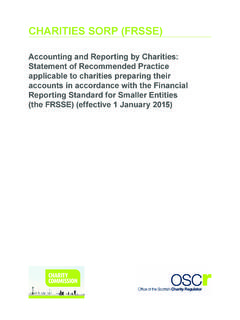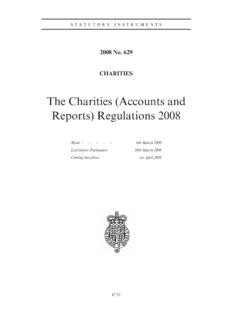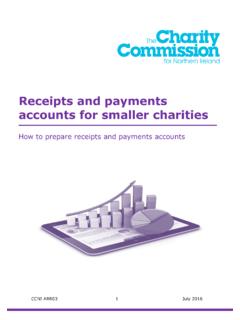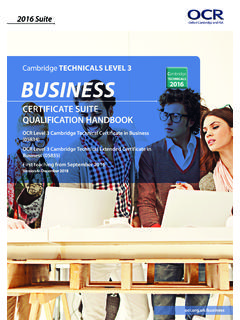Transcription of Fundamental Nursing Skills - Universitas Airlangga
1 Fundamentalnursing skillsEdited byPenelope Ann Hilton SEN, SRN, RMN, DIPN (LOND), FETC, BSC(HONS), MMEDSCI, RNT Lecturer in Nursing , University of SheffieldWWHURR PUBLISHERSLONDON AND PHILADELPHIAF undamental Nursing Skills This book is dedicated to my late mother Noreen, my inspiration, motivation, confidante and best friend. A very brave and compassionate lady to the skillsEdited byPenelope Ann Hilton SEN, SRN, RMN, DIPN (LOND), FETC, BSC(HONS), MMEDSCI, RNT Lecturer in Nursing , University of SheffieldWWHURR PUBLISHERSLONDON AND PHILADELPHIA 2004 Whurr Publishers LtdFirst published 2004by Whurr Publishers Ltd19b Compton TerraceLondon N1 2UN England and325 Chestnut Street, Philadelphia PA 19106 USAAll rights reserved. No part of this publication may bereproduced, stored in a retrieval system, or transmitted in any formor by any means, electronic, mechanical, photocopying, recording or otherwise, without the prior permission of Whurr Publishers publication is sold subject to the conditions that it shall not, byway of trade or otherwise, be lent, resold, hired out, or otherwisecirculated without the publisher s prior consent in any form ofbinding or cover other than that in which it is published andwithout a similar condition including this condition being imposedupon any subsequent Library Cataloguing in Publication DataA catalogue record for this bookis available from the British 1 86156 416 3 Typeset by Adrian McLaughlin, and bound in the UK by Athen um Press Limited, Gateshead.
2 Tyne & WearReprinted 2004 and 2005 AcknowledgementsxiPrefacexiiiContributor sxvIntroductionxviiChapter 1 Breathing Penelope Ann Hilton1 IntroductionCommon terminologyAssessing an individual s ability to breatheMonitoring respiratory rateMonitoring peak flowMaintenance of an airwayMonitoring expectorantDisposal of sputum/oral secretionsObtaining a sputum specimenAdministration of oxygen Artificial respiration (rescue breathing)References and further readingChapter 2 Mobilizing Samantha Athorn and Penelope Ann Hilton20 IntroductionCommon terminologyAssessing an individual s ability to mobilizeMoving and handlingCare of an individual who is fallingCare of an individual who has fallenReferences and further readingContentsvChapter 3 Personal cleansing and dressingAlyson Hoyles, Penelope Ann Hilton and Neal Seymour43 IntroductionCommon terminologyThe skinAssessing an individual s ability to cleanse and dressMaking a bed or cotChanging linen on an occupied bed or cotDisposal of linenAssisting individuals with bathingAssisting individuals with oral hygieneAssisting individuals with eye careFacial shavingHair careAssisting individuals to dressReferences and further readingChapter 4 Maintaining a safe environmentJulie Foster and Penelope Ann Hilton75 IntroductionCommon terminologyPersonal safetyPrinciples of health and safety at workUniversal precautionsPrinciples of asepsisMonitoring a client s pulseMonitoring blood pressureResponding in the event of a cardiopulmonary arrestAdministration of medicinesResponding in the event of a fireAssessing an individual s
3 Ability to maintain a safe environmentReferences and further readingChapter 5 Eating and drinkingCatherine Waskett128 IntroductionCommon terminologyAssessing an individual s nutritional statusviFundamental Nursing SkillsAssessing an individual s hydration statusAssisting clients in selecting appropriate meals/fluidsMonitoring nutritional statusMonitoring fluid intakeAssisting with eating and drinkingFeeding dependent clients and clients with potential swallowing difficultiesProviding first aid to a client who is chokingReferences and further readingChapter 6 CommunicatingPenelope Ann Hilton and Helen Taylor159 IntroductionCommon terminologyAssessing the communication needs of clientsResponding to telephone callsCommunicating with clientsManaging violence and aggressionRecord keepingReferences and further readingChapter 7 DyingPenelope Ann Hilton178 IntroductionCommon terminology Assessing the dying clientCommunicating with dying clients and their relativesSigns of approaching deathConfirming deathAccounting for valuablesLast OfficesReferences and further readingChapter 8 EliminatingCarol Pollard and Beverly Levy199 IntroductionCommon terminologyAssessing the individual s ability to eliminateAssisting clients to use toileting facilitiesApplying/changing a nappyCare of an indwelling urinary catheterviiContentsMonitoring urinary outputMonitoring bowel actionsMonitoring vomitusReferences and further readingChapter 9 Maintaining body temperatureSheila Lees and Penelope Ann Hilton225 IntroductionCommon terminologyNormal body temperatureMethods of temperature
4 MeasurementAssessing an individual s ability to maintain body temperatureMonitoring temperatureRecording and documenting body temperatureStrategies to raise or lower body temperatureReferences and further readingChapter 10 Expressing sexualityPenelope Ann Hilton239 IntroductionCommon terminologyAssessing an individual s ability to express sexualityMaintaining privacy and dignityAssisting individuals to express sexualityReferences and further readingChapter 11 Working and playingSamantha Athorn and Penelope Ann Hilton253 IntroductionCommon terminologyAssessing an individual s ability to work and playAssisting individuals to select appropriate work activitiesAssisting individuals to select appropriate recreational activitiesReferences and further readingviiiFundamental Nursing SkillsChapter 12 SleepingPenelope Ann Hilton267 IntroductionCommon terminologyAssessing an individual s needs in relation to sleep and restMonitoring an individual s sleep and rest patternsAssisting individuals to achieve a balance between activity and restReferences and further readingAppendix IRapid reference aidsPenelope Ann Hilton277 IntroductionNMC Code of Professional ConductGuide to interpreting common medical and surgical terminologyGlossary of medical and surgical termsCommon medical and Nursing abbreviationsCommon prescribing abbreviationsConversion tablesChild development chartBody mass indexLaboratory valuesCalculating infusion (drip)
5 RatesCalculating medicationsAppendix IIRecord of achievementPenelope Ann Hilton306 Guidelines on the use of this record of achievementSkills related to the activity of breathingSkills related to the activity of mobilitySkills related to the activity of personal cleansing and dressingSkills related to the activity of maintaining a safe environmentSkills related to the activity of eating and drinkingSkills related to the activity of communicatingSkills related to the activity of dyingSkills related to the activity of eliminatingixContentsSkills related to the activity of maintaining body temperatureSkills related to the activity of expressing sexualitySkills related to the activity of working and playingSkills related to the activity of sleep and restAdditional skillsIndex315xFundamental Nursing SkillsAcknowledgementsxiFirst of all my eternal gratitude must be expressed to Rose for her unend-ing perseverance and support.
6 I would like to thank the many enlightenedhealth care practitioners and students from the Royal HallamshireHospital, Sheffield, the Northern General Hospital, Sheffield andChesterfield & North Derbyshire Royal Hospital, who contributed to theoriginal research to verify the need for and content of such a text wayback in 1994, and for their continued enthusiasm and input. I would alsolike to thank the many clients and relatives who shared their critical opin-ions; my colleagues whom I somehow managed to press-gang intoauthorship; the student nurses who very kindly passed judgement on theemerging chapters, not least Kerry Atkin, Emma Cornell, Fiona Maris;Sophie Kerslake for the brilliant illustrations; and Joanne Chilvers, JointCourse Leader for the Advanced Diploma in Nursing Studies programmeat the University of Sheffield, for her critical reading of the final book has arisen primarily in response to the increasing concernexpressed about the perceived lack of ability in both students and newlyqualified staff nurses to perform clinical Skills .
7 This deficit has been large-ly attributed to the advent of Project 2000and the subsequent move ofnurse education into Higher Education. Innovations in Nursing such asthe Nursing Process, Nursing Models and new methods of organizingcare delivery, each with their emphasis on providing individualized nurs-ing care, may also have exacerbated this problem. These initiatives havelargely resulted in the demise of procedure manuals as a source of refer-ence in many clinical areas. Consequently nurses and the increasingnumber of health care workers in new roles such as cadet nurses, healthcare assistants and generic ward practitioners no longer have an easilyaccessible source of reference in the clinical arena. This is particularlyproblematic when they are faced with undertaking a procedure for thefirst intention of this book is to redress this deficit by:1 outlining the elements of essential Nursing procedures in a readily acces-sible format2 providing the rationale for the recommended actions3 promoting evidence-based book is unique in that it encourages the reader to keep a record ofachievement in relation to clinical skill competence.
8 It also differs fromexisting publications in that it is presented in a more readily accessible anduser-friendly format for the busy clinician. Further, this text may be of ben-efit to lay persons undertaking the main carer role in the home selection of Skills for inclusion is based on extensive consultationwith experienced clinicians, students, clients and their significant othersas well as teachers of Nursing . Each procedure has been carefullyresearched to provide a contemporary foundation for practice. The bookis the first of a series which aims to promote professional and personalPrefacexiiidevelopment from novice through to expert in sequential and further reading are offered at the conclusion of inherent danger in producing books of this nature is that they maybe perceived to be encouraging a task-orientated approach to patient acknowledging this potential the chapters have been structured aroundthe Activities of Living (Roper et al 2000) to encourage the reader to vieweach of the Skills as an intricate part of holistic individualized care.
9 Thebook also contains a rapid reference section of common terminology, con-version tables, laboratory results and other, equally useful, every attempt has been made throughout the text to reflect con-temporary practices, the reader is reminded that practice will continue todevelop in the light of new evidence and changing policy. A commitmentto lifelong learning is therefore Ann HiltonDecember2003 ReferenceRoper N, Logan WW, Tierney A (2000) The Roper-Logan-Tierney Model of Nursing : TheActivities of Living Model. Edinburgh: Churchill Nursing SkillsSamantha AthornRGN, STH Movement and Handling Key Trainer,Practice and Professional Development Sister, Royal HallamshireHospital, SheffieldJulie FosterRN (Adult), DipN (Sheffield Hallam), Senior Staff Nurse,Gynaecological Directorate, Royal Hallamshire Hospital, SheffieldPenelope Ann HiltonSEN, SRN, RMN, DipN (Lond), FETC, BSc(Hons), MMedSci, RNT Lecturer in Nursing , University of SheffieldAlyson HoylesRGN, SCM, DipN (Lond), PGCEA, RNT, BEd (Hons),MSc ( Nursing ) Nursing Lecturer, University of SheffieldSheila LeesRGN, MMedSci, BA (Hons), RCNT, DipN (Lond), FETCN ursing Lecturer, University of SheffieldBeverly LevyMA, BSc (Hons), RGN, RCNT, Cert Ed (FE), RNT Nursing Lecturer, University of SheffieldCarol PollardONC, RGN, DipN (Lond), Cert Ed (FE), BA (Hons)
10 ,MMedSci, RNT Nursing Lecturer, University of SheffieldNeal S



